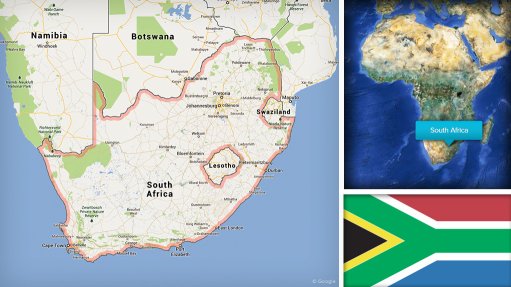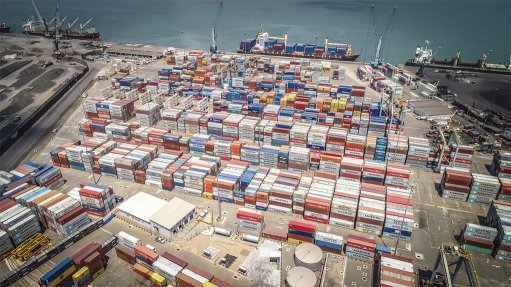Food inflation accelerates again, and could get much worse, warns research group
Food inflation in South Africa continues to accelerate, the Bureau for Food and Agricultural Policy (BFAP) has reported. In its 'Food Inflation Brief' for February, released on Wednesday, it notes that, last month, South African food prices rose 0.9% in month-on-month terms and by 6.4% in year-on-year terms. In January, food inflation had been 5.7%, year-on-year. In February, food inflation had contributed 1.1 percentage points to the consumer price index headline inflation figure of 5.7%.
International factors are playing a very significant role in driving food inflation, which is a global phenomenon. These factors include increasing energy prices, disruptions of supply chains, and adverse weather, augmented by the effects of the Russia-Ukraine War. These are reducing supply and increasing input costs, worldwide.
“In February 2022, the [United Nations Food and Agriculture Organisation] Food Price Index, a measure of underlying agricultural commodity prices, increased by 3.9% from January 2022 (month-on-month) and by 20.7% from February 2021 (year-on-year),” highlighted BFAP. “This represents a new all-time high, surpassing the levels last reached in February 2011. All commodity sub-indices increased, with the most significant being observed in the vegetable oil (+8.5% month-on-month) and dairy (+6.4% month-on-month) price sub-indices.”
South Africa, however, is not the worst affected market in the world. This country’s 6.4% year-on-year food price inflation is exceeded by the rates for the US (7.9%), Kenya (8.7%), Brazil (9.1%) and Zambia (16%). This was because the prospects for the South African summer crop harvest are good, BFAP explains, with the consequence that food prices have remained close to export parity prices. Further, constraints on the spending power of South African consumers had reduced market demand.
In terms of the food categories in the South African market, those that recorded the highest year-on-year inflation last month were oils and fats (22.7%), meat (8.6%), vegetables (7.7%), fish (5.3%), milk, cheese and eggs (4.7%), bread and cereals (3.7%), non-alcoholic beverages (2.8%), and sugar and sugar-rich foods (1.8%). Fruits actually recorded deflation of 1.6%. In month-on-month terms, bread and cereals saw the highest inflation, of 2.4%, followed by fish (2.3%), non-alcoholic beverages (1.9%), fruit (1.8%), oils and fats (1.4%), while the milk, cheese and eggs and vegetables categories both recorded 0.1%. Meat saw no inflation at all, month-on-month, while sugar and sugar-rich foods experienced deflation of 0.6%.
Individual and commonly bought food items which recorded year-on-year inflation that exceeded 10% last month were, in the order given by BFAP, vegetables (pumpkin, tomatoes, cabbage, spinach), beef (offal, brisket), mutton/lamb neck, chicken (giblets, individually quick-frozen [IQF] and non-IQF portions), oil products (margarine, sunflower oil including canola oil), frozen hake, beverages (Ceylon and other black tea, instant coffee), cake flour, tinned mixed vegetables, whiteners, and bacon. Food items that experienced inflation of from 6% to 10% were (again in BFAP’s order) beef (T-bone), tinned baked beans, macaroni, eggs, polony, fish (canned pilchards, fish fingers), fresh low fat milk, vegetables (cucumber, beetroot, onions, broccoli), beverages (fruit juice) and fresh whole chicken.
The price of BFAP’s ‘thrifty healthy food basket’ (THFB) jumped 4% in February, on month-on-month terms (in money terms, by R120), and by 7.4% (or R352) in year-on-year terms. The nutritionally-balanced THFB is composed of 26 food items from all food groups, and is designed to feed a family composed of an adult man, an adult woman and two children (of different ages). For such a family, earning two minimum wages, plus child grants and benefitting from school feeding, the THFB would have consumed 30.6% of their income last month.
“[T]he sharp commodity price impacts arising from the Russian invasion of Ukraine on 24 February is to a large extent not yet captured in the February food inflation figures,” cautioned BFAP. “While already clear in agricultural commodity markets, there is typically a three- to four-month lag before the full impact of higher agricultural commodity prices manifests in retail food prices.”
Together, Ukraine and Russia account for 24% of global wheat exports, 21% of world barley exports, 14% of global maize exports and 56% of world sunflower products exports. Uncertainty about their production and exports are driving up prices. Russia was also the world number one exporter of chemical fertilisers; sanctions have now reduced this supply, while the conflict has also driven up oil prices, and these two factors are driving up agricultural input costs.
“During 2006-2008, a similar phenomenon of two years of persistently high grain commodity and energy prices pushed food inflation to double-digit levels reaching a peak of 19.2% in August 2008,” warned BFAP. “Although this is still far off with food inflation around 6.7%, the situation in Ukraine combined with risks of other supply disruptions such as drought or hurricanes that affect oil refining infrastructure, or Covid-19-related logistical challenges, could fuel inflation to reach double digits towards the end of the year.”
Comments
Press Office
Announcements
What's On
Subscribe to improve your user experience...
Option 1 (equivalent of R125 a month):
Receive a weekly copy of Creamer Media's Engineering News & Mining Weekly magazine
(print copy for those in South Africa and e-magazine for those outside of South Africa)
Receive daily email newsletters
Access to full search results
Access archive of magazine back copies
Access to Projects in Progress
Access to ONE Research Report of your choice in PDF format
Option 2 (equivalent of R375 a month):
All benefits from Option 1
PLUS
Access to Creamer Media's Research Channel Africa for ALL Research Reports, in PDF format, on various industrial and mining sectors
including Electricity; Water; Energy Transition; Hydrogen; Roads, Rail and Ports; Coal; Gold; Platinum; Battery Metals; etc.
Already a subscriber?
Forgotten your password?
Receive weekly copy of Creamer Media's Engineering News & Mining Weekly magazine (print copy for those in South Africa and e-magazine for those outside of South Africa)
➕
Recieve daily email newsletters
➕
Access to full search results
➕
Access archive of magazine back copies
➕
Access to Projects in Progress
➕
Access to ONE Research Report of your choice in PDF format
RESEARCH CHANNEL AFRICA
R4500 (equivalent of R375 a month)
SUBSCRIBEAll benefits from Option 1
➕
Access to Creamer Media's Research Channel Africa for ALL Research Reports on various industrial and mining sectors, in PDF format, including on:
Electricity
➕
Water
➕
Energy Transition
➕
Hydrogen
➕
Roads, Rail and Ports
➕
Coal
➕
Gold
➕
Platinum
➕
Battery Metals
➕
etc.
Receive all benefits from Option 1 or Option 2 delivered to numerous people at your company
➕
Multiple User names and Passwords for simultaneous log-ins
➕
Intranet integration access to all in your organisation


















